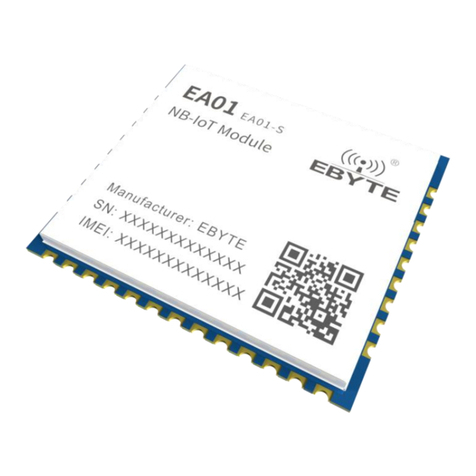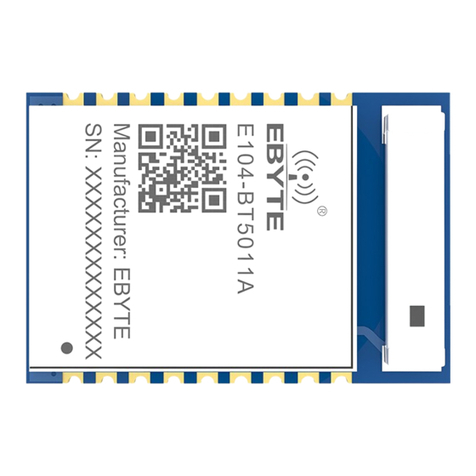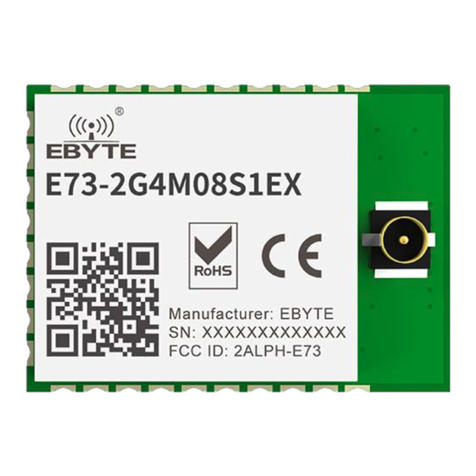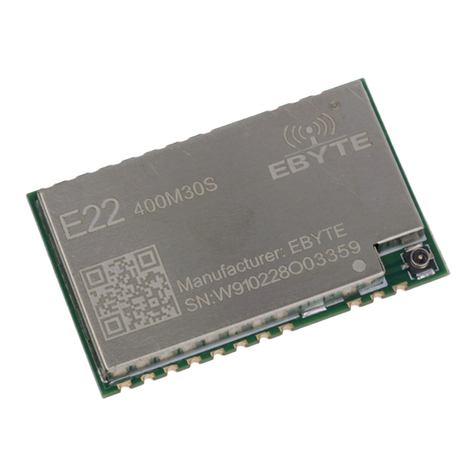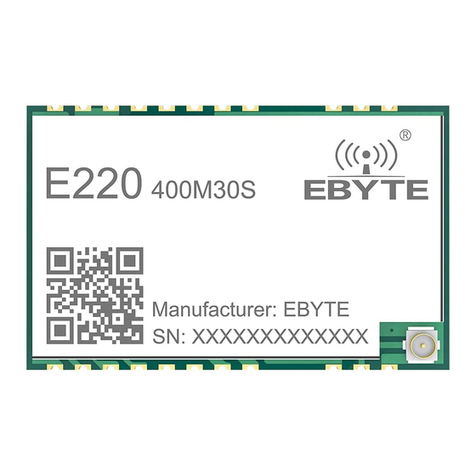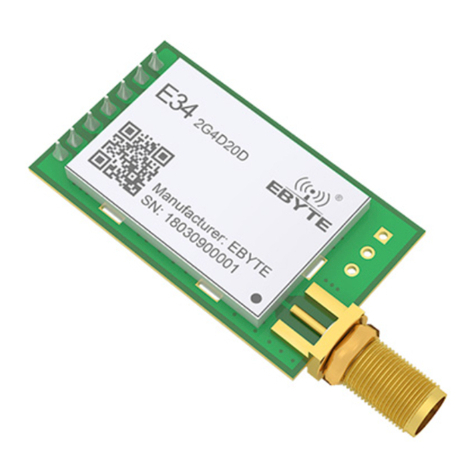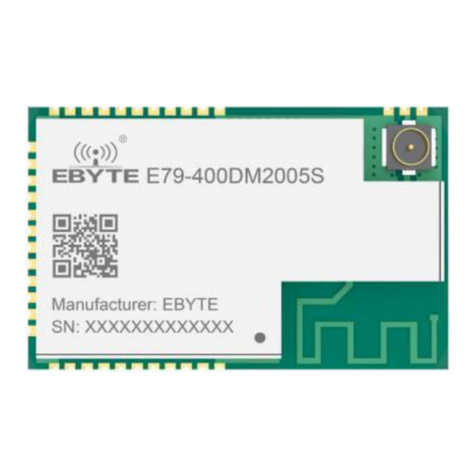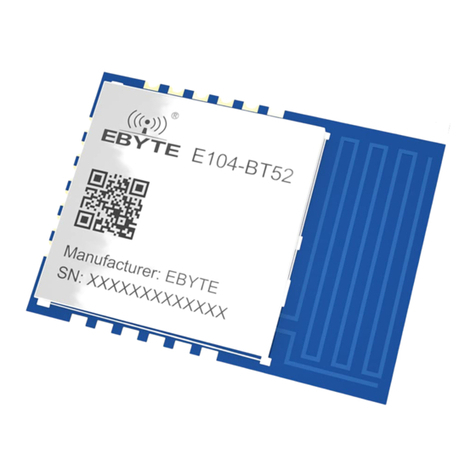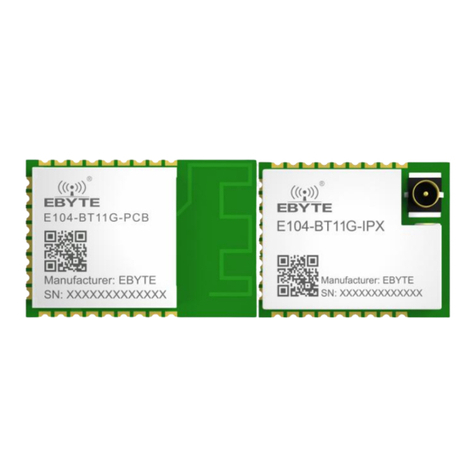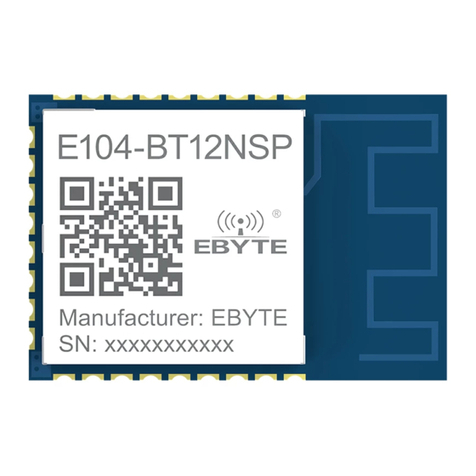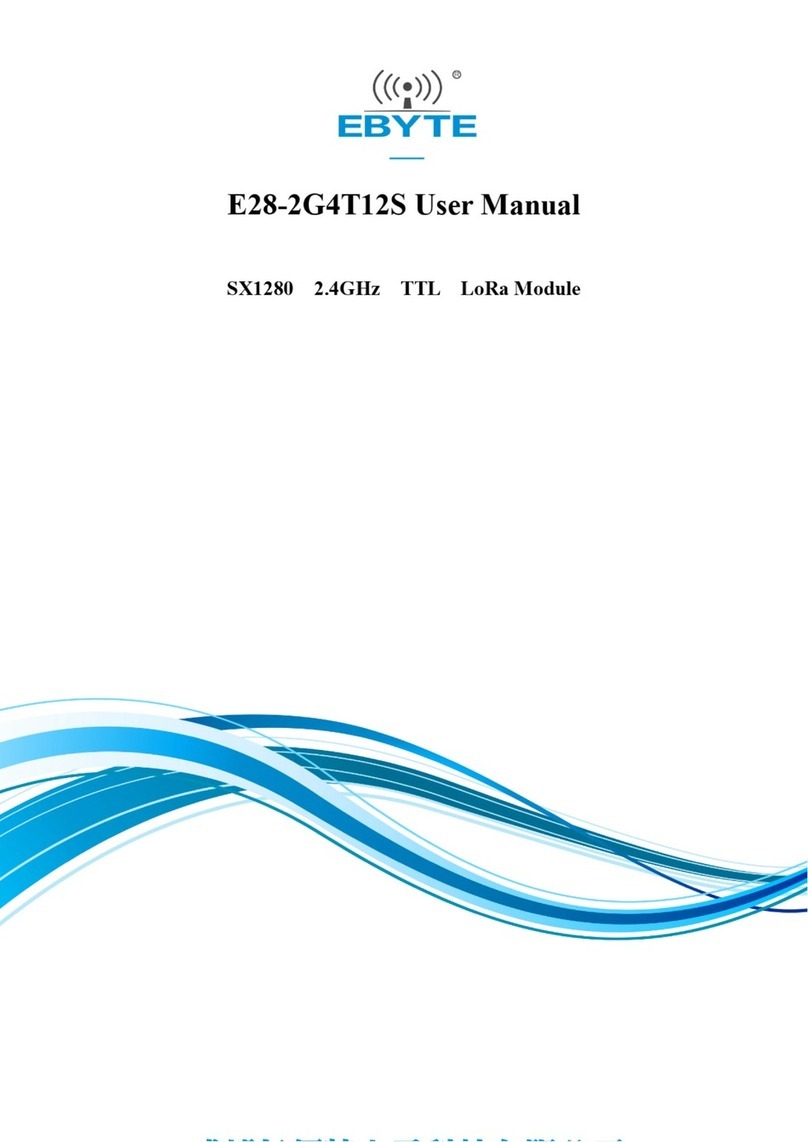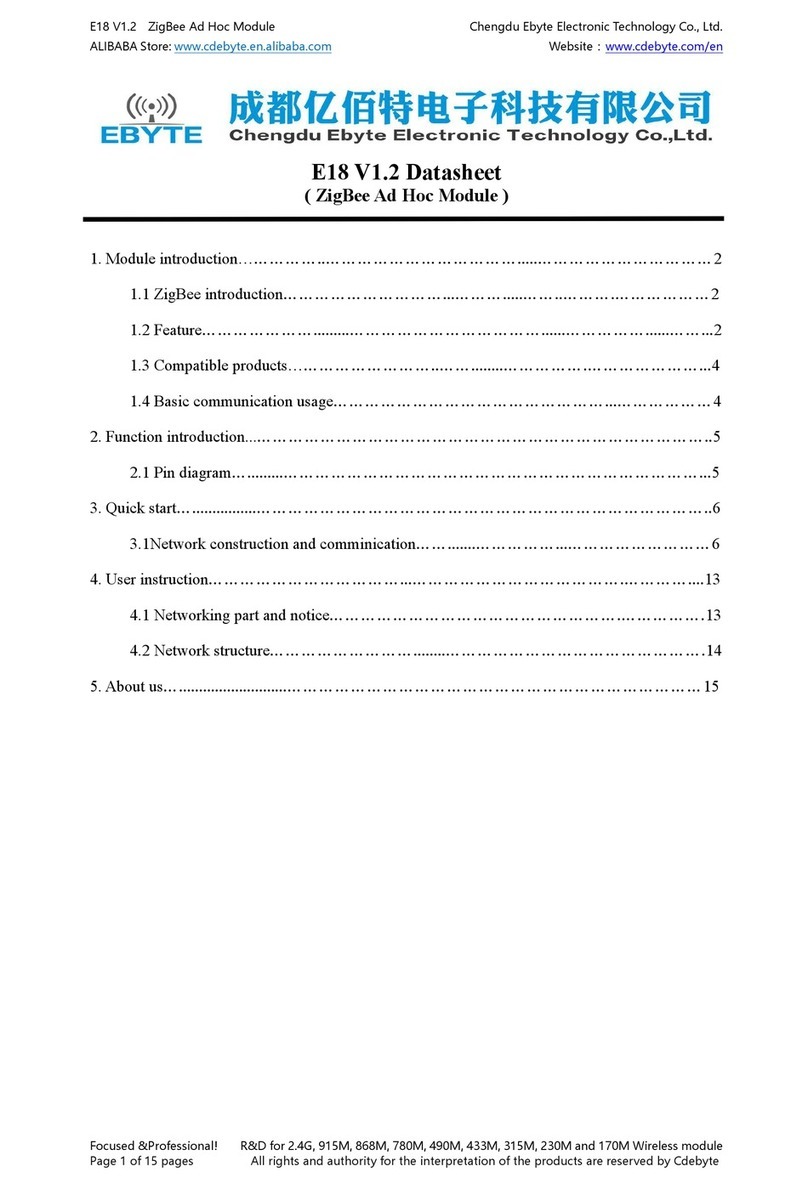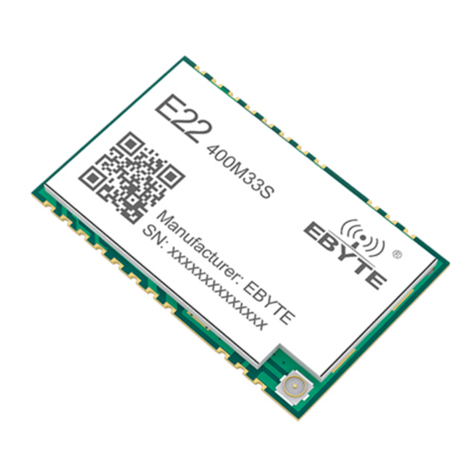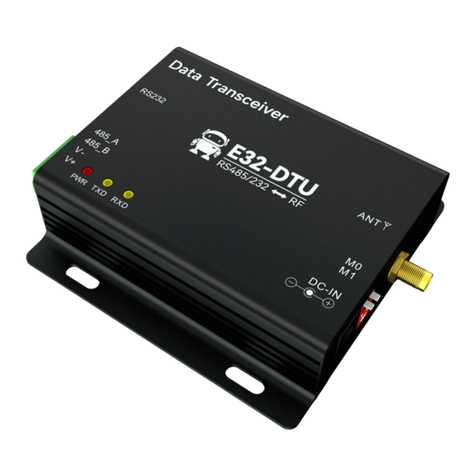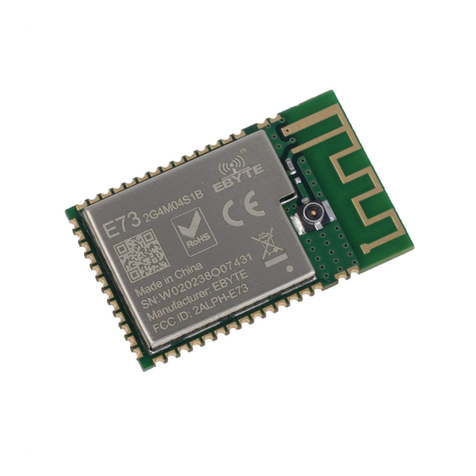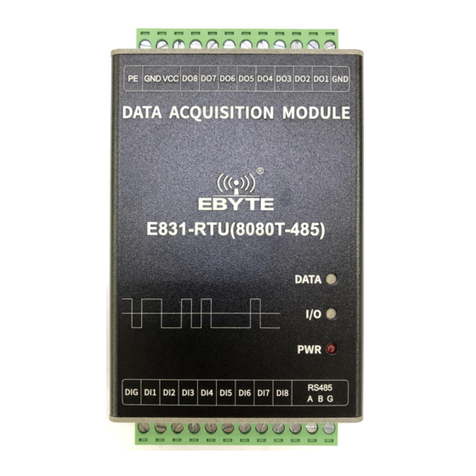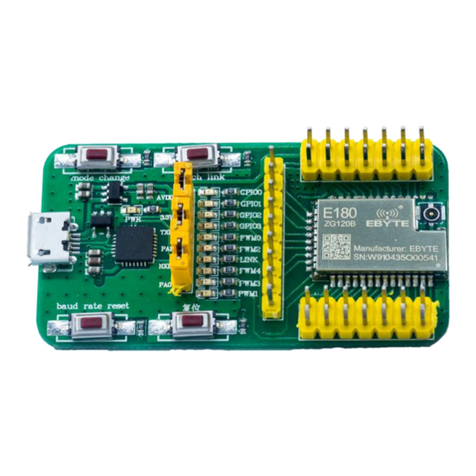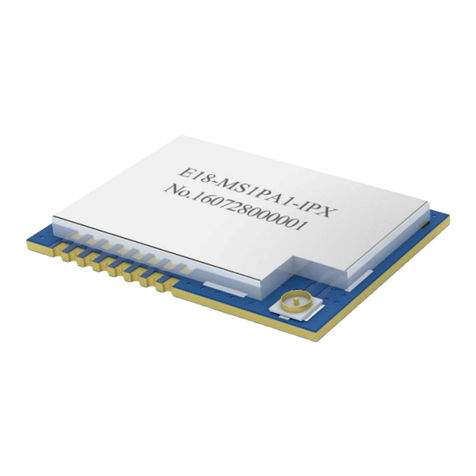
Chengdu Ebyte Electronic Technology Co., Ltd. E78-915LN22S(6601) User Manual
Copyright © 2012–2022 , Chengdu Ebyte Electronic Technology Co., Ltd.
4 Terms and Definitions
2.1 LoRa
LoRa is one of the LPWAN communication technologies. The full name is Long Range Radio, which means "long-range radio"
in Chinese;
The company currently leading the technology is a foreign semtech company;
The main ISM brand of LoRa is in free frequency bands around the world: 433MHz, 470MHz, 868MHz, 915MHz, etc.
Features: Low power consumption, long distance, low cost.
2.2 LoRaWAN
LoRa Alliance is an open, non-profit organization led by Semtech in March 2015. The alliance released a low-power wide area
network standard based on an open source MAC layer protocol: LoRaWAN protocol standard.
Network topology: Star structure
network composition: LoRa module, gateway (Gateway or base station), Server (including Network Server, Network control,
Application
Server).
LoRaWAN divides LoRa nodes into three categories: A/B/C:
Two-way transmission terminal (Class A):
The terminal of Class A will follow two short downlink receiving windows after each uplink, so as to realize bidirectional
transmission. The terminal arranges transmission time slots based on its own communication requirements, with minor changes on the
basis of random time (ie, the ALOHA protocol). This Class A operation provides the terminal system with the lowest power
consumption for the application, and only requires the application to perform downlink transmission from the server within a short
time after the terminal uplink transmission. The downlink transmission performed by the server at any other time has to wait for the
next uplink from the terminal.
Two-way transmission terminal (Class B) that demarcates the receive time slot:
Class B terminals will have more receive slots. In addition to the random receive windows of Class A, Class B devices also open
other receive windows at specified times. In order for the terminal to open the receiving window at a specified time, the terminal needs
to receive a time-synchronized beacon (Beacon) from the gateway. This allows the server to know when the terminal is listening.
Two-way transmission terminal (Class C) that maximizes receive slots:
Class C terminals basically keep the receiving window open all the time, and only close briefly when sending. Class C terminals
consume more power than Class A and Class B terminals, but at the same time, the delay from the server to the terminal is the shortest.
Note: E78-868LN22S (6601) supports two types of equipment, Class A and Class C;
2.3 ADRs
ADR is called adaptive data rate in Chinese. In the loraWan network system, in order to maximize the battery life of the terminal
device and the overall network capacity, the LoRaWAN network server manages the data rate and RF output of each terminal device
separately through the Adaptive Data Rate (ADR) algorithm. In the LORAWAN system, the server automatically updates and sets the
rate of the node according to the signal receiving capability of the node. The rate is low when the distance is far, and the rate is high
when the distance is short. In practical applications, the effective bandwidth and load capacity of the network are greatly improved.

